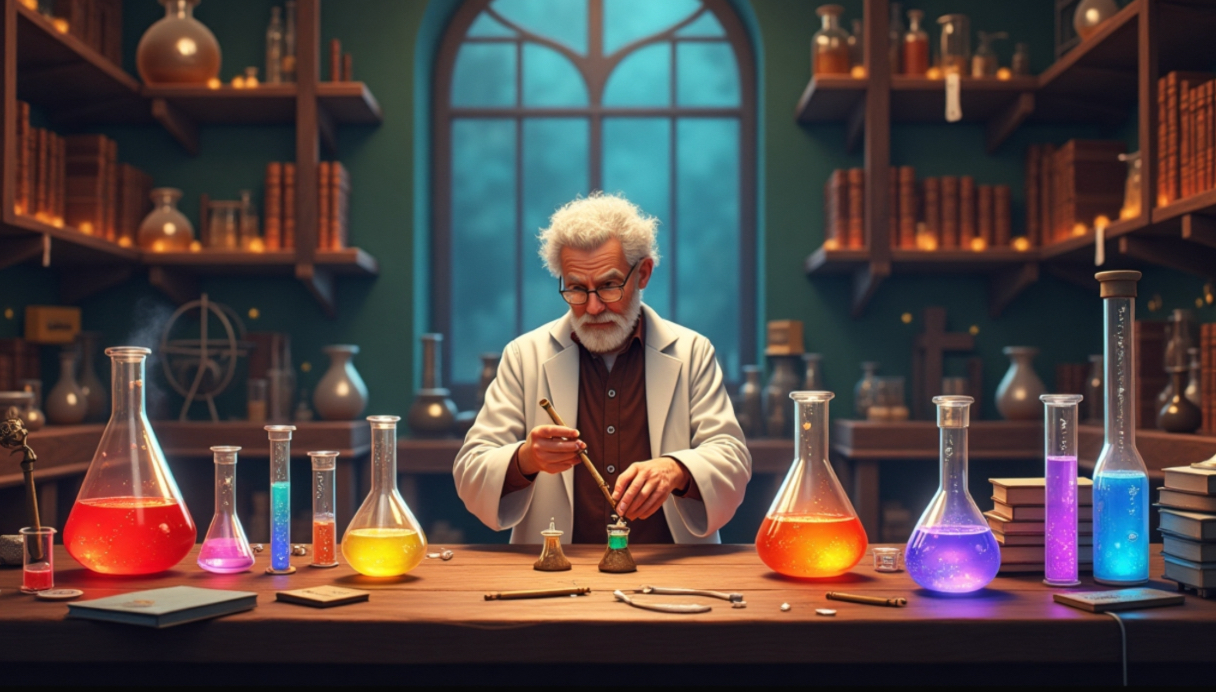
Every gamer loves drinking a potion and seeing their stats go up. Health restores. Mana refills. Strength surges. While these effects are fantasy, the way potions are designed often borrows from real chemistry. That’s why potion systems feel logical instead of random in games at Dragon Slots. Science helps anchor the magic.
In games like The Elder Scrolls or The Witcher, players gather herbs and mix potions. It is a lot like real science. Ingredients matter. Heat changes things. Mixing creates new results. The process decides the outcome. Potions work in games because they copy how real experiments happen.
Some games include details that reflect how real liquids behave. For example, ingredients that don’t mix may form cloudy potions. Others dissolve perfectly, creating smooth solutions. This is like real chemistry. Some things mix, some don’t. Players may not know why, but the potion feels real. It looks like you could hold it. Even the way it swirls or fizzes can make the potion seem alive.
The idea of poison and cure is very old. In games, a bad potion can hurt you. Antidotes use the same ingredients but are mixed differently. This works like real science. For example, snake antivenom comes from snake venom. Games use this idea to make potions seem real.
Energy Drinks and Mana Potions
Mana potions may seem magical, but they work like real energy boosters. Caffeine or sugar gives a quick burst that fades. In games, mana potions do the same. They restore energy fast but can have cooldowns or side effects. There’s no free, endless boost.
In some RPGs, brewing requires waiting. Ingredients must sit and change over time. This is like fermentation. In real life, yeast turns sugar into alcohol. Bread rises. Wine forms. Game developers use the idea to add depth. Instead of instant mixing, potions sometimes require patience—like a true chemical process.
Not every potion recipe is known. Games often let you experiment. Combine a flower and a mushroom to see the result. Maybe you get healing. Maybe you get fire resistance. This mirrors the spirit of real chemistry labs, where discovery often comes from failed experiments. The joy of “what if” keeps players engaged.
Some games highlight heat as part of potion making. In Monster Hunter, cooking ingredients makes them stronger. This works like real chemistry. Temperature affects reaction speed and results. Too much heat can destroy compounds. Too little may leave the potion weak. This detail adds tension and realism to crafting.
Fantasy Elements With Real Roots
Even when potions get wild—like invisibility elixirs or liquid fire—they often build on real science. Invisibility recalls light refraction. Liquid fire echoes thermite or napalm. Game designers may exaggerate effects, but they tie them to known principles. That connection makes the fantasy easier to accept.
Why Players Connect With Potion Systems
At heart, potions appeal because they blend imagination with logic. Players enjoy feeling like alchemists, combining knowledge with creativity. The rules make sense, so victories feel earned. This balance of structure and magic is why potion crafting stays popular across so many RPGs.
Picture this: a player stands before a bubbling cauldron, herbs in one hand and crystals in the other. They drop each item in, stirring slowly. Steam rises. The liquid shifts from green to gold. A system message flashes: “Potion of Vitality Created.” The scene feels magical—but also oddly scientific. That’s the power of chemistry at play in design.
Potion systems sometimes teach real lessons. Kids playing RPGs often learn simple chemistry without knowing it. They see that heat can change things, some ingredients cancel each other out, and mixing the right items can make strong effects. Games become subtle classrooms, blending science with story.
In many online games, potion making becomes a social role. Players craft for others, selling healing tonics or rare elixirs. Behind the economy lies chemistry-inspired labor. Mixing and experimenting is what real scientists do. In games, it’s the same, just with brighter colors and unusual ingredients.
Of course, not all potion systems stick to science. Some skip logic for speed. Others oversimplify. But the most memorable ones keep a thread of realism. Without limits, potions lose impact. With them, they feel part of a living world where choices matter. That’s the balance developers aim for.
As games evolve, potion design may lean even more on science. With advances in graphics and simulation, players might see chemical reactions unfold in detail. Smoke, fizzing, and crystallization could mimic real lab experiments. Tomorrow’s potion systems may teach even more about chemistry while keeping the wonder of magic alive.